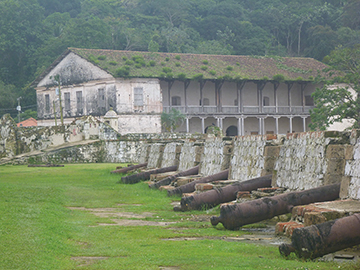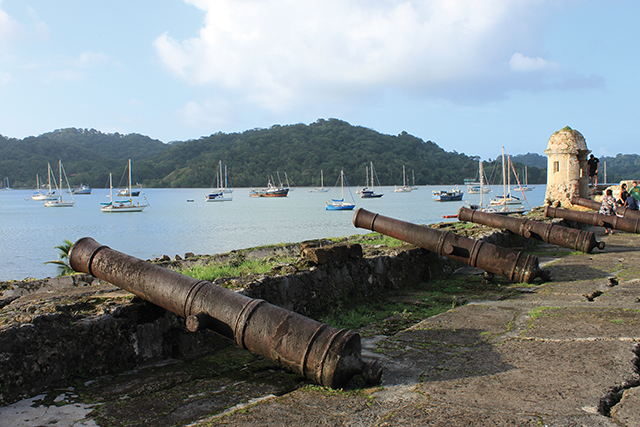09° 33′ 0″ N 79° 39′ 0″ W (published August 2013)
Panama’s Portobelo is a gem of a place, the perfect intermediary stop between the San Blas Islands and gritty Colon, the Caribbean gateway to the Panama Canal. Originally, this quiet port—a deep indentation open only to the southwest—wasn’t even on our cruising radar. But after an enjoyable week’s stay there, it was hard to understand why this fascinating port and safe harbor hasn’t achieved a higher profile among Caribbean cruisers.
Christopher Columbus was the first European to note the inviting, spacious bay, which he named “Puerto Bello.” It quickly became a key New World port, not only for the Spaniards bringing South American silver across the isthmus by mule train, but also for the English privateers stalking them. In its heyday, Portobelo’s Customs House saw one-third of the world’s silver passing through its doors; the 1638 structure is one of several colonial buildings still standing in town, a UNESCO World Heritage Site.
Today’s visitors can climb creaky wooden steps to the second-story porch for an overview of the bay and the town. From there, it’s easy for the imagination to populate the cobblestoned streets with Spanish soldiers —some optimistically counting their pieces of eight, others only counting down the sweltering days of their posting in one of the many fortifications ringing the harbor. Just outside the bay lies a striking, rocky islet named Isla Drake after the famous privateer; his compatriot, Captain Henry Morgan, besieged this stronghold in the 17th Century. Their relentless attacks eventually convinced Spain to abandon the dangerous overland route for a safer alternative—sailing around Cape Horn!

Nowadays, Portobelo is a quiet place left to locals and sailors. Cruisers starved for cash and supplies after an extended San Blas sojourn can re-enter civilization here (with all its pluses and minuses), replenishing cash from the ATM and buying basic supplies in several Chinese-run “mini supers.” Our favorite stops were the local bakery for delicious bread, sweet rolls, and fresh fruit smoothies; the Argentinean restaurant with its second-floor balcony seating; and Captain Jack’s, a friendly cruiser hang-out that offers drinks, meals, and internet access— in addition to hosting one heck of a Christmas party. Visitors can explore many historic sites around town, from the bayside Fort San Jeronimo to the church of San Felipe and the graceful, oft-overlooked Merced Bridge, dating back to 1597. History buffs will appreciate the informative panels erected around town, though like the crumbling buildings, these, too, have seen better days.
It’s true that some visitors come away jaded, seeing only the litter and decay that tarnishes Portobelo’s surface. However, those who scratch deeper will find an intriguing port steeped with history together with a commodious, well protected bay. In the wider scope of things, Portobelo makes the perfect counterpoint to the palm-fringed San Blas Islands and the engineering superlatives of the Panama Canal, another must-see among Panama’s diverse attractions.
Nadine Slavinski is the author of the book Lesson Plans Ahoy: Hands-On Learning for Sailing Children and Home Schooling Sailors. Currently on sabbatical from teaching, she cruises aboard her 35-foot sloop, Namani, with her husband and young son. They are currently in New Zealand and looking forward to new Pacific landfalls. Her website, www.sailkidsed.net lists free resources for home schooling sailors.















